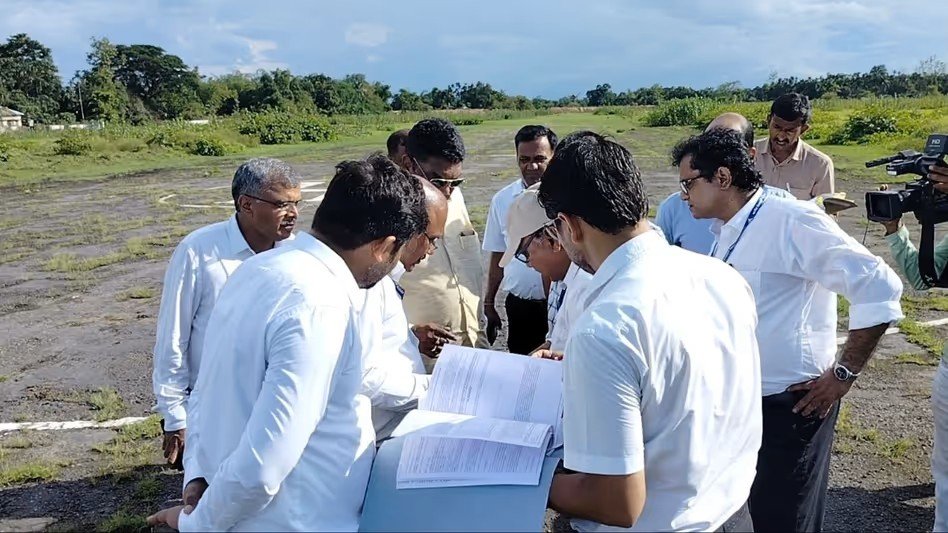The Tripura government has launched a feasibility study to revive the defunct airport in Tripura’s Kailashahar. Officials believe that this initiative could mark a turning point for the Unakoti district and surrounding regions by reconnecting them to the country’s aviation network after decades of isolation.
Transport Minister Sushanta Chowdhury recently announced the move, stating that the study will evaluate technical, infrastructural, and economic aspects to determine the viability of restarting operations at the defunct airport in Tripura. The site once handled limited air traffic but has remained unused since the 1990s.
Read More: Gaurav Gogoi Named Assam Congress Chief
Feasibility Study Targets Reviving the Defunct Airport in Tripura
The state government has already engaged consultants to conduct a comprehensive analysis of the old Kailashahar airport’s potential. The team will examine the existing airstrip, evaluate safety parameters, assess cost estimates for upgrades, and outline operational requirements in line with the Directorate General of Civil Aviation (DGCA) standards.
According to officials, the study will also consider environmental and land acquisition concerns, if any. Once the report is completed, the government will approach the Ministry of Civil Aviation for necessary approvals and financial support under the UDAN scheme, aimed at enhancing air connectivity in underserved regions.
Strategic Benefits of the Defunct Airport in Tripura
Reviving the defunct airport in Tripura has multiple potential advantages. Kailashahar lies close to the India-Bangladesh border, offering an opportunity to create a regional hub that caters not only to domestic but also future international traffic.
Additionally, Unakoti district has witnessed a surge in tourist interest, especially after the Union Ministry of Tourism included the Unakoti archaeological site in its PRASHAD scheme for pilgrimage and heritage destination development. Improved air access could attract more visitors and stimulate the local economy.
“The airport can act as a catalyst for regional growth,” said an official from Tripura’s Transport Department. “Apart from boosting tourism, it can significantly benefit trade, emergency services, and inter-state travel.”
Tripura’s Air Connectivity Challenges and Opportunities
Despite progress in transport infrastructure across the Northeast, Tripura still faces challenges in robust air connectivity, especially in its northern and remote districts. The state’s main airport at Agartala caters to domestic routes, but travel from interior areas can take several hours due to poor road conditions and limited rail connectivity.
The revival of the defunct airport in Tripura could bridge this gap, offering quicker access to the state capital and other metropolitan cities. It would also reduce dependency on a single airport, enhancing redundancy during emergencies or maintenance disruptions.
Minister Chowdhury highlighted that improving intra-state air infrastructure is a key goal in the state’s development roadmap, and the Kailashahar airport project aligns with that vision.
Public Reception and Stakeholder Involvement
Initial public response to the revival initiative has been positive. Residents of Unakoti district view the project as a long-overdue development that can bring jobs and economic activity to the area. Local entrepreneurs and tourism operators have also welcomed the move, expressing optimism that increased footfall will revitalize businesses.
The state government has indicated plans to consult with local bodies, environmental experts, and civil society groups to ensure the feasibility study reflects ground realities. This participatory approach is aimed at building consensus and preempting opposition that may arise during the implementation phase.
Central Government Support and Funding Plans
Officials from Tripura have already begun informal talks with the Union Ministry of Civil Aviation to include the project under the Regional Connectivity Scheme (RCS-UDAN). The program provides financial incentives, such as viability gap funding and route concessions, to make regional air travel affordable and commercially viable.
The Ministry has reportedly shown interest, noting that reopening the defunct airport in Tripura fits well within the broader vision of strengthening Northeast India’s connectivity. However, formal approval will hinge on the outcome of the ongoing feasibility study.
If cleared, the project may see funding support from both the central and state governments, along with possible partnerships from private players interested in operating regional flights.
Environmental and Technical Hurdles Ahead
Despite the enthusiasm, experts caution that reviving a long-defunct airport involves considerable challenges. The site’s topography, changes in urban development over the decades, and degradation of existing infrastructure could require extensive restoration.
Environmental assessments will also be crucial, particularly if the project involves land expansion or clearing forested areas. The government has assured that the revival plan will follow all regulatory norms and incorporate sustainability considerations.
What Lies Ahead for the Defunct Airport in Tripura
With the feasibility study underway, Tripura’s Transport Department expects to finalize the initial report within the next six months. If findings are favorable, the state will submit a detailed project proposal to the Civil Aviation Ministry, possibly initiating groundwork by early next year.
Minister Sushanta Chowdhury emphasized the government’s commitment to equitable development. “We are dedicated to connecting every region of Tripura through air, road, or rail. The revival of this defunct airport in Tripura is a critical part of that mission.”
As Tripura positions itself for a more connected future, the resurrection of the Kailashahar airport may well serve as a symbol of the state’s broader aspirations for economic and infrastructural renewal.
Read More: Unakoti in India: 5 Things You Didn’t Know About India’s Angkor Wat


